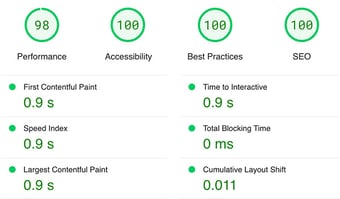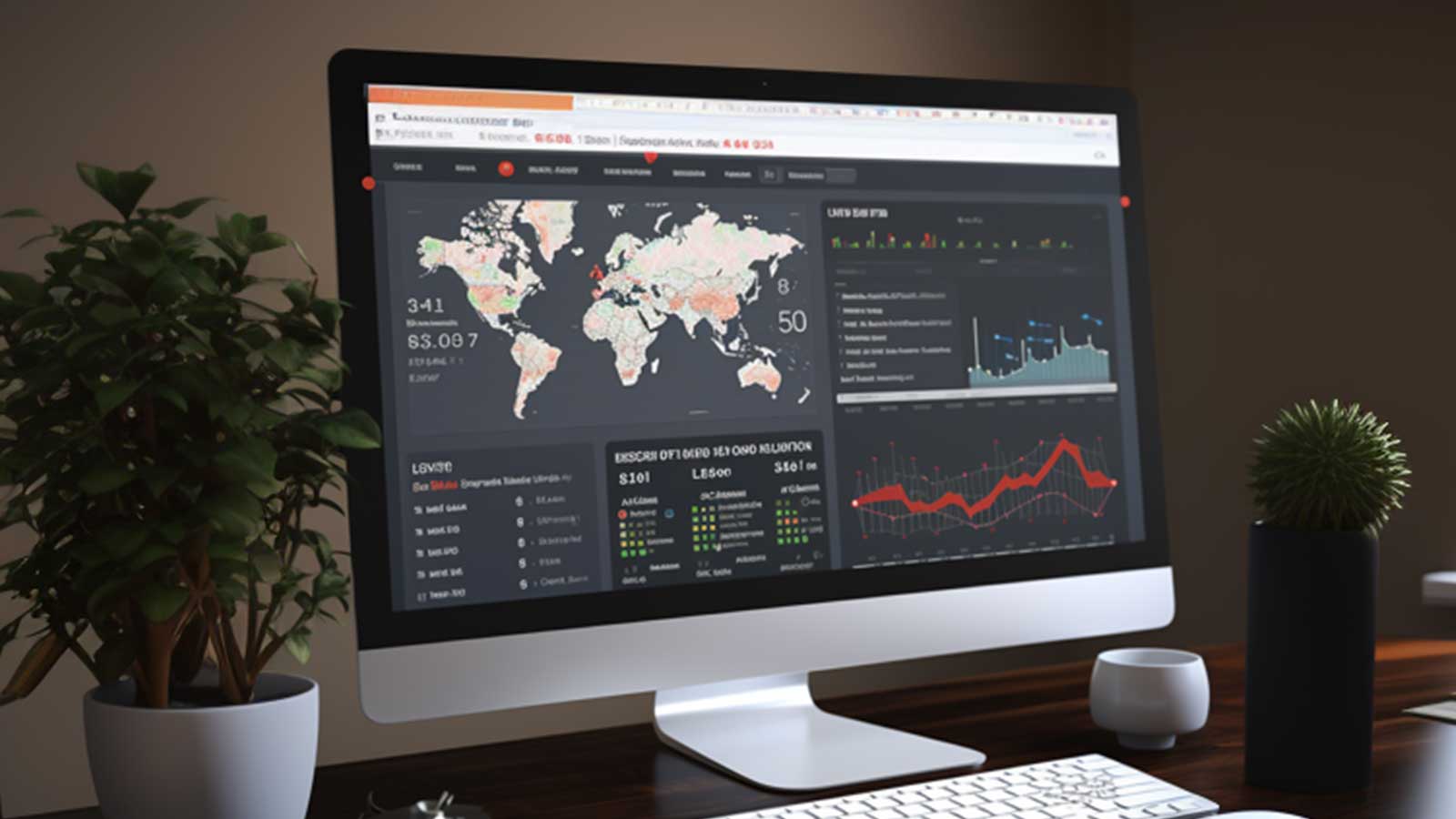3 Proven Ways to Boost Traffic
If a website launches and no one on the internet sees it, can it still generate business?
Take full advantage of the new and improved HubSpot CMS experience with the CLEAN theme.
Have a question and looking for an answer? I've likely got a video for that or an article that covers it.
Google PageSpeed Insights is the gold standard in analyzing the speed and performance of a website. Here is how CLEAN Pro ranks. Not too shabby for a media-rich page.

Report generated: Tues, March 7, 2023, based on Home Page - Opt 1.
7 min read
 Miriam-Rose LeDuc
:
December 8, 2023
Miriam-Rose LeDuc
:
December 8, 2023

Want to stay relevant in 2024? Discover tomorrow’s trends and explore science-based ways to transform your marketing goals into daily success.
As exciting as our rapidly changing world is (and yes, we’ll cover how to boost your results with AI in marketing), we need more than new tools and goals to succeed in the year.
Did you know 80% - 90% of New Year’s resolutions fail?
The key to keeping resolutions is to develop new habits, which can be challenging. Before we dive into key industry insights, we’ll cover a few ways you could hack this human tendency in yourself as you tackle your 2024 projects using the Small, SMART, and Simple framework.
Then, we'll apply our framework to marketing resolutions like:
And finally, I'll show you a trick to apply this framework to any resolution.
Are you in?
Big Hairy Audacious Goals are inspirational. However, it can be all too tempting to create huge solutions to your challenges.
Take, for example, the New Year’s resolution to “get in shape”. There are so many forms this could take. Do you want to train for a marathon? Bench press 50 lbs? Reduce your risk of heart disease?
Make it smaller.
Specific, Measurable, Actionable, Realistic, and Timely. We love these!
Say you decide to focus on training for a marathon. Your SMART goal could look like this:
Specific: Complete the Chicago Marathon, covering all 26.2 miles.
Measurable: Track training progress through daily runs, gradually increasing distance and improving time, with regular check-ins every two weeks to assess progress.
Achievable: Follow a training plan tailored to my current fitness level, including long runs, speed work, and recovery days.
Relevant: Running the Chicago Marathon aligns with my personal fitness goals.
Time-bound: Complete the marathon on October 8, 2024. Start the training program by April 1, 2024, allowing for six months of preparation.
Or, in summary:
"I plan to run the Chicago Marathon on October 8, 2024, and follow a six-month training plan leading up to the event to improve my endurance and speed with by-weekly progress check-ins."
James Clear writes about habit stacking in Atomic Habits (great read, by the way). The idea is to make starting new habits easy by attaching them to an existing daily rhythm.
For example, to achieve your training goals, try placing your running shoes by your bed so you see them first thing in the morning. Put those puppies on your feet once your alarm goes off, and you’ve already won half the battle.
So, that’s the Small, SMART, Simple framework. Ready to apply it to our marketing resolutions? Let’s do it.
According to EssenceMediacom’s Global B2B Marketing Report, data is a driving force in increased complexity for marketers. Our roles require good analytics tools now more than ever. How are you presenting your data?
As Peter Drucker reportedly said, “What gets measured gets improved.” Set this up early in 2024 to track trends throughout the year.
Analytics and data can be intimidating. Break it down! There are so many things we could measure! So many things we could graph!
Start with one question you don’t have an answer to. For example, how many page views did your campaign offer get this month? How does that compare to last month?
Do you have that data? If so, do you see a trend?
Try using something like:
"Implement a website analytics tool and improve CTA clicks by 20% over six months to optimize the landing page for better conversion rates and increased sales."
If you don’t have traffic data, your first step might be finding a good website analytics tool.
Too busy for research? I’ve already got you started with this tool comparison spreadsheet. Make a copy, and BOOM you’ve taken your first step. Easy, right?
Now that you’ve got data coming in, it’s time to optimize.
What will you optimize for?
If you want your efforts to prove ROI, then there’s one focus area you shouldn’t ignore: optimizing for user intent.
There are four categories of user intent:
Let’s pick Transactional for starters since these folks want to make a purchase.
For brick-and-mortar businesses, voice search optimization can help you target transactional user intent. Make conversational tweaks to your keywords to help locals find you in their time of need. For example, someone with a big caffeine withdrawal headache might ask Siri or Alexa, “Where’s the nearest coffee shop?” instead of typing “coffee shop near me” into Google.
For online businesses, though, purchase intent is still likely to come through text searches.
An example goal could be:
"Conduct a comprehensive keyword audit and adjust at least 30% of our primary keywords to align with user search intent, improving user experience and search ranking by the end of Q2 2024."
Try plugging your keywords into Google.
What do you see? Do the results align with the search intent of your users? Remember that Google has curated its SERPs to reflect what users want to see. You can learn tons from comparing these search results to your website or landing pages.
For example, let’s say you work for a marketing agency. The search term “digital marketing” would not be comprehensive enough to capture high purchase intent. While you might get searches for “digital marketing agency near me” or “best digital marketing services,” you might also get low purchase intent searches like “digital marketing strategies” or “what is digital marketing.”
Go ahead, and give it a try. It’ll take you about 10 seconds. Easy peasy.
You might be sick of hearing it, but AI seems here to stay and will continue to evolve our work lives.
It’s not just a trend. As AI expert Ethan Mollick writes, “You don’t have time…It might seem too early to consider changing an organization to accommodate AI, but I think that there is a strong possibility that it will quickly become too late.”
But seriously, the explosion of new tools and capabilities can be overwhelming. Let’s make this actionable and achievable, shall we?
Pick one use case and integrate it into your existing workflows. Say, for example, you want to try an awesome AI chatbot to reduce customer service response times and improve your overall customer experience on your website. Great choice!
"Integrate an AI chatbot into our website by June 30, 2024, to increase engagement by 25%. The chatbot should handle inquiries, recommend products, and collect feedback with our brand voice. We’ll measure success by interactions, satisfaction scores, and user time."
Try dedicating 15 minutes to AI chatbot research after you check your email in the mornings or immediately following your lunch break. Oh look, I even made you a Google Calendar event! Feel free to adjust the time so it fits your schedule.
Don’t skimp on this one or schedule over it! This is your time to move your business forward and do the work that has a real impact. Treat it like you would a commitment to another person. Honor it.
Don’t let your focus on AI overshadow your human relationships. They’re the building blocks of your business and more precious now than ever.
Relationships can encompass a lot. Where will you focus your energy? On expanding your affiliate partnerships? On building backlinks for your content?
For instance, try:
"Get 10 quality backlinks every month by responding promptly to HARO requests. This will enhance our website's authority and search engine performance. Monthly monitoring will ensure consistent growth in backlink acquisition."
Pick one press request alert service from the following:
Once you sign up, the alerts will land in your inbox and serve as a reminder to pursue this strategy every time you check your email. Just what you were hoping for, more emails! Yayy….
BONUS: this is also a great way to prompt topic ideas and see what’s “newsworthy” to the press.
You know you’ve seen it. That marketing email that’s “personalized” but doesn’t feel personal?
Most of the time, emails like that find me like:
Segmentation is a huge topic. You’ve got lists, filters, lead status, workflow logic, and plenty of other factors, not to mention the complex humans on the receiving end of your emails. How can we make it smaller?
One way you could look at it is from the buyer’s journey stages (Awareness, Consideration, Decision).
To make your segmentation optimization as small as possible, try starting with the Decision Stage. This is the low-hanging fruit of your buyer’s journey since leads are closer to making a purchase. Do your emails answer their questions?
Try something like:
"Optimize email nurture flow for buyers in the Decision stage of our flagship SaaS product. Reverse-engineer buyer's thought process and add social proof to emails by the end of Q2 2024 for a 5% improvement in email-driven conversions."
Here’s one way you could start working toward this SMART goal: collect social proof with automatic alerts for new product reviews. I bet you could set that up with just a few clicks.
This one may feel scary.
It’s true: you might scare off leads who aren’t the right fit, but that’s okay.
Time isn’t renewable. Wouldn’t you rather spend it on the right customers?
Plus, buyer demands for transparency are on the rise according to this B2B Reviews Study.
One SUPER effective way to meet this expectation is with a pricing calculator. It empowers customers to answer questions without having to talk with sales (which saves you resources, too!).
For example:
"By the end of Q1 2024, incorporate a dynamic pricing calculator into our website to help qualify leads and reduce time spent on sales quotes by 25%."
Start by watching this short video on what a pricing calculator should be able to do for you. It’ll take less than 4 minutes of your time.
We all have our own unique goals and business objectives. The idea is to break it down into the smallest achievable steps, and then start. Simple, but not easy.
If you want guidance on finding the smallest possible first step, try nesting AI prompts. Plug in your goal, then ask AI (ChatGPT or your preferred tool) to break it down into achievable steps.
Then plug step 1 into the tool, and ask for smaller steps.
Repeat until you have a tiny first step you can take immediately.
I want you to know this isn’t intended to be another checklist to add to your “to-do”s (we all have enough of those!). I hope you’ll use this as a guide to inspire your goals for 2024, and as a reminder that you need to take action to reach those goals. Break down your big resolutions into manageable tasks for achievable success.
Want more marketing trends and tips throughout the year? Put the emails that matter in your inbox. Get our Hot Spot delivered to your inbox every other week.

If a website launches and no one on the internet sees it, can it still generate business?

Sick of wasting time on the wrong prospects? These vital website elements will help you level up your inbound marketing, qualify more leads, and...

As we all know, the Google Gods tend to favor light, fast pages when serving up search results. In this post, I'm going to break down my top 5 web...